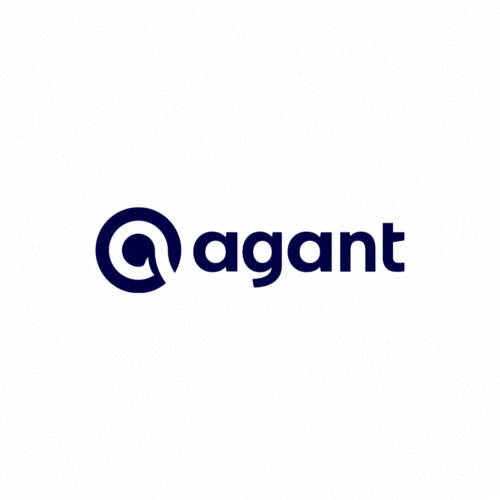How does the market look today?
When looking at the payments aspect of central bank digital currencies (CBDCs), distinctions are frequently made between wholesale and retail systems and infrastructure. While this approach may reflect the traditional and legacy infrastructures that are currently in place, the opportunity for change brought about by the digital revolution raises the question of whether it is indeed time for a rethink.
As digital currency initiatives are being explored across the globe, we see different approaches being taken. The Bank of England and Bank of China are focused on retail use cases while the Monetary Authority of Singapore (MAS) and Banque De France are focussing on wholesale infrastructure. Only the Swedish Riksbank appears to be considering a hybrid model. This raises a couple of questions: Is the siloed solution approach the right one? Does such an approach reflect the clearing infrastructures that we have in place today?
How do Real Time Gross Settlement systems operate today?
If we look at today’s frameworks, many countries typically have at least one high value payment system which tends to clear and settle individual transactions on a real time accumulated basis and are known as Real Time Gross Settlement (RTGS) systems. These systems settle on a payment-by-payment basis. Due to high value transaction size, they tend to operate on a reduced set of operating hours and are often closed overnight and at weekends. RTGS systems are typically used in wholesale markets.
To meet the needs of retail markets, there is usually some kind of automated clearing house (ACH) which is used for low value mass payment type transactions. Final settlement in these systems is usually arranged via the RTGS on a Deferred Net Settlement (DNS) basis, meaning that RTGS is actually serving the needs of both wholesale and retail markets. With appropriate pre-funding/collateralisation in place, made possible due to the smaller values, these systems often operate at 24x7x365.
There are often alternative infrastructures operating in the same jurisdiction. In the UK, there are, in fact, five different infrastructures (CHAPS, FPS, BACS, Cheque Clearing and LINK) while in the USA there are three (Fedwire, CHIPS and an ACH). In Europe, there are TARGET 2, TIPS, EBA (Euro 1, Step1/2 and RT1), as well of course as the national ACHs. This highlights the legacy proliferation of payment systems in various jurisdictions.
A further complication is that, whilst we can differentiate between the payment infrastructures supporting wholesale markets from those underpinning retail payments, in many cases the reality is that the transaction split is far from being a simplified retail/wholesale split. For example, in the UK, CHAPS is used primarily for wholesale clearing but retail transactions such as house purchase payments are also made using CHAPS. Corporate payments go across the FPS system, however FPS has a £250k payment limit, and therefore any transactions above that limit would need to use CHAPS. In the USA it is actually the CHIPS system that processes a lot of high value transactions for the private sector rather than Fedwire which is the RTGS (admittedly CHIPS participants pre-fund all positions, but it is still a net settlement system). A similar scenario arises for the EBA Euro 1.
The need for a more holistic approach to CBDC Clearing and Settlement
These inconsistencies therefore raise the question of whether it would be sensible to take a more holistic approach when looking at CBDC clearing and settlement. A single “system” handling both wholesale and retail CBDC certainly makes sense from a processing point of view. Payment providers will presumably have to link into non-CBDC payment systems, and so subdividing CBDC payments into retail and wholesale would potentially complicate matters further as more complex internal routing is created.
A further consideration is that different systems carry different amounts of data enrichment (newer systems tend to carry richer data). By unifying the wholesale and retail CBDC, a single rich data format can be implemented, eliminating the data discrepancies that exist today across the UK payment systems. There is nothing to stop efficient scheduling of payments in one CBDC system to prioritise high value wholesale payments. Similarly, when implementing a liquidity savings mechanism the costs of payment on the wholesale side can be reduced by netting non-urgent payments and it may be possible to maximise Liquidity-Savings Mechanism gains by including high value retail transactions, and retail settlement transactions.
From a liquidity management perspective it would similarly make sense to have a single CBDC system rather than having to move liquidity between infrastructures. Interoperability between CBDC and non CBDC will also be easier if there is one CBDC system covering both wholesale and retail.
From a customer perspective, they are not concerned with the distinction. End users want the simplest, safest and most comprehensive outcome possible so that they can transfer value quickly, securely, and cheaply through a streamlined process.
Nevertheless, we can’t ignore the legacy framework and wholesale versus retail distinctions that exist today. The various cross-border wholesale initiatives that are currently underway may provide valuable insights as to how best to achieve an integrated approach. Furthermore, the current G20 initiative on cross-border payments and the recent Committee on Payments and Market Infrastructures for “ideas on solutions to expand PVP settlement” for cross-border payments lends further weight towards analysis in this important area.
The way ahead
As CBDC deliberations continue and as further analysis is undertaken, we need to ask ourselves whether the existence of the distinction between wholesale and retail money is an accident of the development of the means of transferring value between people and accounts or whether indeed the rationale for the separation no longer exists. Indeed, the same is true of the separate processes of payment, clearing and settlement. A well-designed CBDC would simplify the business of value transfer and obviate the need for these historic distinctions.
This paper was written by Jim Ford and Phil Kenworthy, both Originating Members of the Digital Pound Foundation.
Jim has served in the payments industry for over forty years and, amongst other roles, has served on the clearing committee of the ECU Banking Association, the forerunner of the Euro Banking Association, as well as numerous working groups of CLS Bank and assisted in its creation. Since 2014, Jim has been increasingly involved in blockchain developments and in central bank digital currencies. He continues to provide strategic thinking into payments via both the Whitechapel Think Tank and the Digital Pound Foundation.
Phil Kenworthy is the former CEO of the UK’s High Value Payment System (CHAPS) and currently sits as an Independent Non-Executive Director on the Board of ClearBank and the Advisory Board of RTGS Global. He is a member of the UK’s Access to Cash Review Panel and is the Lead Technical Reviewer for the London Institute of Banking and Finance’s CertPay Qualification. Previous roles include Operations Director at CLS (global FX Settlement) and Chief Internal Auditor at CRESTCo (now Euroclear UK and Ireland). Phil also runs his own Payments Advisory Company. Phil began his career at the Bank of England.



































































